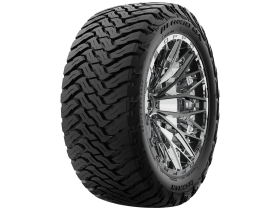Emergency vehicle lights (EVLs) are essential warning and safety features in emergency vehicles like police cars, ambulances, and fire trucks. These are one of the most prominent lights on the roadway and typically indicate that specific vehicles (wearing these lights) are in an urgent situation and need other motorists to clear the road to dispel the crisis.
You need to be aware of a few things regarding the emergency lights. These vehicles must perform their duties effectively and safely to save lives. This guide will teach you everything about EVLs’ importance, colors, and types.
Let’s get started.
What are Emergency Vehicle Lights?
A vehicle emergency light indicates that a driver is in a hurry, and other motorists must clear the road so the driver can reach the desired location safely and efficiently. Such as, an ambulance with blinking lights and sirens indicates the patient needs immediate care, and other drivers must clear the road. On the other hand, law enforcement officers use it as a signal to stop a driver regarding any traffic violation.
Why is There a Need for Emergency Vehicle Lights?
The following are three reasons emergency lights are essential for certain situations.
-
Visibility of The Approaching Vehicle
One of the prime advantages of LED emergency vehicle lights is their increased visibility. People can easily see and make way for them when they see oncoming vehicles with lights and sirens. It results in time-saving and eliminates the possibility of an accident.
-
The Illumination Provides Safety.
Vehicles equipped with emergency lights make working in the dark easier for crew members and workers. For this purpose, they use strobe warning lights to inform motorists about emergency vehicles on the road.
-
Road Users Become Aware of The Situation.
With these lights and sirens, road users become aware of emergency vehicles on the road and clear obstructions immediately. Additionally, it facilitates differentiation between regular and emergency vehicles.
Emergency Light Styles
It is possible to choose an emergency light design for a vehicle depending on its type and size.
-
Beacon Lights
These lights are magnetized instead of bolted to the wall, so you can easily remove them as needed. The vehicle would be more valuable if it served other purposes besides its typical functions.
-
Visor Lights
Your vehicle has these lights mounted out of sight, such as on the dashboard or windshield. They can be helpful tools for reducing distractions during driving.
-
Light Bars
You can mount light bars on top of the vehicle roof. It helps in improving visibility while driving as well as assists in warning other drivers. The police light bar on cop vehicles is a prime example, and the siren or alarm warns other drivers to clear the road.
Depending on the vehicle’s dimensions, they are available in lengths ranging from 4 to 60 inches. Furthermore, they are accessible in both mini and full sizes for the interior and exterior.
Types of Emergency Lights
Every type of emergency light has a unique function. Here are the most common:
-
Red
An emergency vehicle, such as an ambulance, police car, or fire engine, typically has a red warning light. Drivers use it during an emergency operation needing a speedy response.
-
Yellow
The most common use of yellow light is in construction, towing, and escorting. Transport trucks, buses, pickup trucks, tow trucks, and other vehicles that move slowly typically have yellow lights.
-
Green
Fire trucks, patrol vehicles, and ambulances are the most common vehicles that use green emergency lighting. The purpose of green light is to spread awareness to the public that they should be careful, although there is no emergency. Several private security companies in the United States use green lighting to monitor government offices.
-
Purple
Very few emergency vehicles use purple lights, but if you see one, it is typically a funeral service or perhaps a medical service. You must acquire a permit if you intend to use purple light on a vehicle.
-
White
Ambulances, police vehicles, and fire engines usually have white emergency lights that coordinate with red or blue. White light also assists with reversing a vehicle. In other cases, we can use it to illuminate the vehicle’s interior or the rear number plate.
Conclusion
Several jurisdictions limit emergency lights’ use to respond to an emergency only. For example, clearing the road for emergencies, stopping ongoing traffic, or training exercises!
Government agencies and private security companies require special permits to use emergency lights. A citizen cannot use these emergency lights because it is against the law.







